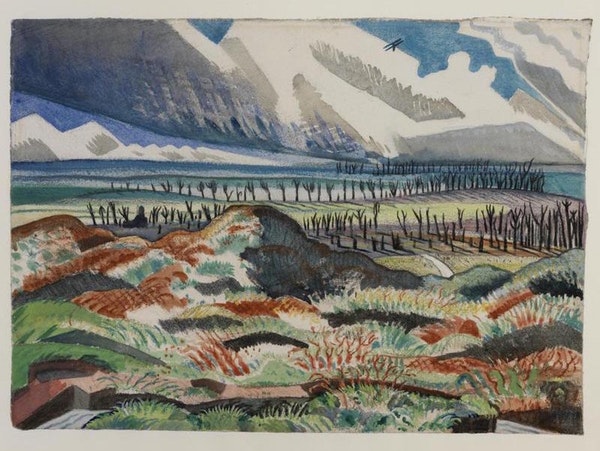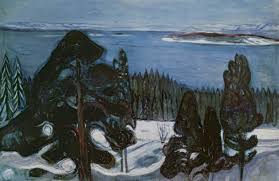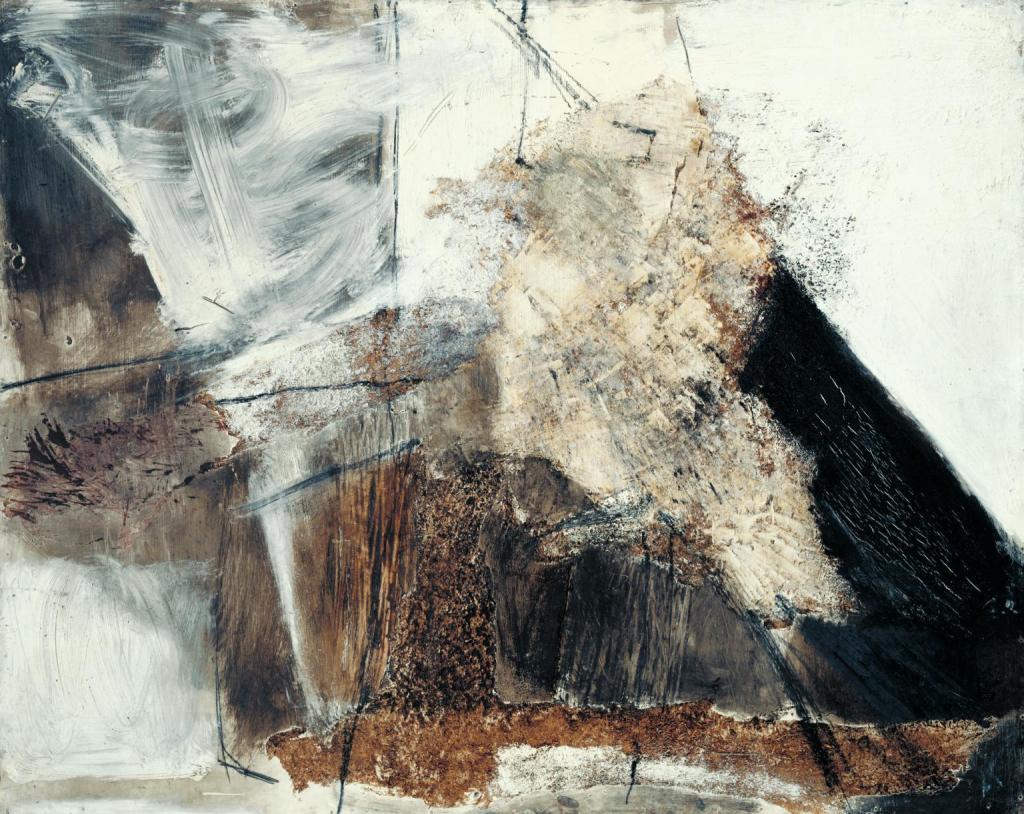Looking at the research points in this part I soon realise that it would be good to start working on it, before I get into much more paintings, as expression and compositional learning could add to my work.
Research point 1
On the Moma website I read that the painting below, reminded Dali of the coast of Catalonia. As he once explained: “This picture represented a landscape near Port Lligat, whose rocks were lighted by a transparent and melancholy twilight; in the foreground an olive tree with its branches cut, and without leaves.” He referred to his work as hand painted dream photographs, which is how he applied the Surrealist methods of dreams, the subconscious and imagination. One is immediately intrigued by the strange watches that dominates the foreground in this painting of a desolate looking coastal area – dead tree…


With regards to landscape paintings by the German Expressionists, I looked at the work of Emil Nolde, who painted Espressionistic landscapes and interiors with brilliant and emotional colours. His brushstrokes were expressive and explained by curators as fierce and spontaneous. I read that Peter Doig’s work is compared with his work. (Keith Hartley, co-curator of the German Expressionist’s largest UK at the Scottish National Gallery of Modern Art in Edinburgh.

In the landscape paintings of Edvard Munch, the work is about ideas about nature and feelings of melancholy, rather than how the Norwegian landscape really looked.

I also came upon the work of Sandra Blow and her very earthy landscape works. She use organic materials and techniques like hurling and scraping. I see this as very intuitive, but also expressive and gestural.

I looked at artist doing work within the current social landscape, like immigration, war, displacement….

When we talk about progress in this country, there are groups that are always left out — often black people, working-class poor people and migrants. Through “Untitled (so much darkness, so much brownness)” and through my art practice, I aim to challenge the notions that keep marginalized people in the margins. I believe that art has a crucial role to play in transforming, redefining and reimagining the global phenomenon of migration. When it comes to migration, the discourse rarely focuses on the stories of real people trying to succeed; instead, the conversation is dominated by criminality and punishment.
RESEARCH POINT 2
I need to research the Golden Mean and its application to artistic composition. as well as look into the ‘rule of thirds’ as another compositional principle. I see these compositional tools as aiding to create balance, harmonious proportions and layouts in a composition, and not as rules to which a painter to should adhere to. Recently my husband, who is also a hobby carpenter, bought Golden Mean Calipers. I decided to check proportions of existing designs – my body dimensions was the first to be done! It is really awesome to see this 1:1618 design in my own anatomy.

relationship that two parts, one larger and one smaller, are to each as the whole is to the larger
part.
We are seeing patterns that keep repeating in natural things – looked at a bug, and my face and hand and arm, but its is much easier to understand when things are flat – like a photo of a bug, or my face.

Looking at Landscape painting artists have used the lines to place their focal points close to these intersections in order to give balance. The image below is a great example I can apply.

2. From the diagonal, connect one of the remaining corners to the diagonal by a line that is perpendicular to the diagonal.
3. Through the point on the diagonal where the perpendicular line meets it, draw two lines, one horizontal and one vertical that divide the canvas into four unequal sections. The ratio of the largest of these sections to the overall canvas is a golden ratio.
With regards to the fact that the Golden Mean is more aesthetically pleasing to the eye, a German psychologist, Gustav Fechner, did a lot of research on this
matter. After thousands of measurements of common rectangles that we see every day, he discovered the average to be close to Phi. He measured books, playing cards, windows, etc. and came to the conclusion that most people prefer a certain rectangle design. I find that I could learn from this in terms of how I plan my paintings – use foreground, middleground and background.
I looked at the work of Peter Doig in terms of his compositional choices. One sees the horizon line it the top third of the painting, and feels that you are looking through a tree canopy onto the boat in the water. He is a great colorist and dares with the colour combinations to create tension and balance in his almost surreal landscape paintings.

Most of his work would start off as a photograph or a memory. He says: ” The photographic element is usually only a part of the composition – something that involves perspective or dimension for which I need a reference; something that is distorted maybe and would be unbelievable if drawn straight out of my head. Having said this, I have been trying to get away from the photograph and use drawings or memory as a start. ” https://www.theguardian.com/artanddesign/2009/sep/20/guide-to-painting-peter-doig.
Thinking about working plein air, I take the following ideas with me:
I will work from a fixed viewpoint and consider my own eye level to help create depth within the painting and change the relationships between objects.
Peter Doig about his work process:
“Painting for me is very much about the material. I say this because I rely on materials being around and being used and visible. Paint tubes in a shop are the least inspiring things, but paint when mixed and congealed and getting old in pots and jars for me suggest possibilities. Sometimes rotten paint is the best (and something I couldn’t ever intentionally mix). I was never a “start-with-a-fresh-palette-in-the-morning” type of painter. I react to what happens during the making of a painting. This is what determines when a painting is finished for me. I have no ultimate plan, really. I want to be surprised. I would get very bored if I followed a procedure.
Generally, my paintings are made with thinned-out oil paint. Over time, different areas are built up and made more opaque. The sense of light, space and mood of a painting does not come naturally (or by a known skill) but through working, and often by chance. This can be frustrating. The hardest thing for me has always been what to paint and why – I spend more time thinking about this than painting.”
https://www.theguardian.com/artanddesign/2009/sep/20/guide-to-painting-peter-doig